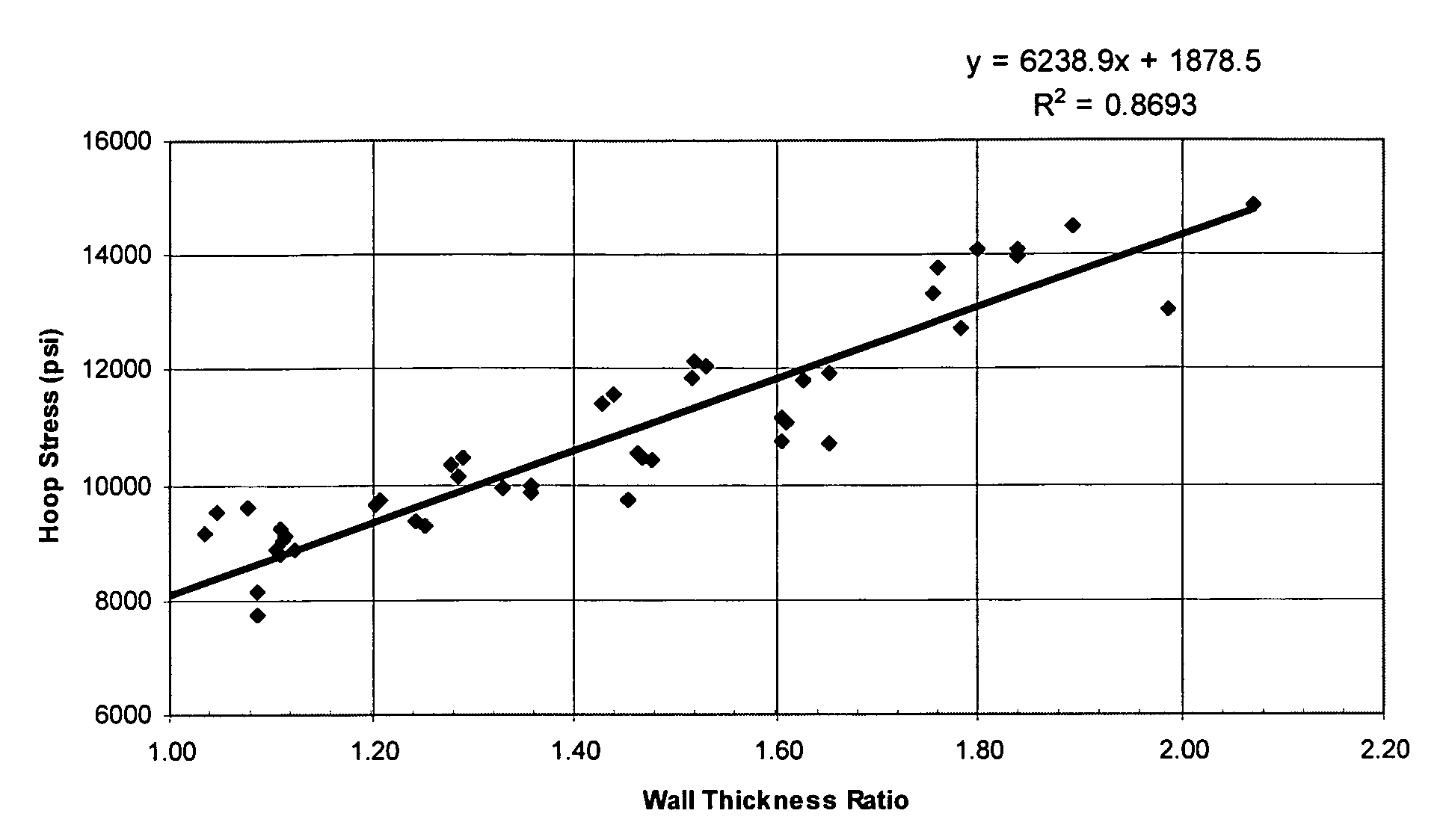Method for determining pressure capability in conduit
a pressure capability and conduit technology, applied in the direction of instruments, fluid-tightness measurement, force/torque/work measurement, etc., can solve the problems of limiting the use of pvc pipe in sliplining rehabilitation applications, reducing the pipeline capacity by reducing the diameter, and limiting the application of pvc pip
- Summary
- Abstract
- Description
- Claims
- Application Information
AI Technical Summary
Benefits of technology
Problems solved by technology
Method used
Image
Examples
Embodiment Construction
[0017]The present invention is directed to a method of determining pressure capability of a conduit, which is subsequently expanded, yielding an expanded conduit. It is important to determine the pressure capability of the resulting expanded conduit, as that conduit may be subject to an internally pressurized environment, such as use in the high-pressure or municipal water field. This method may be implemented on a computing device, such that the resulting computer-implemented method provides results that are displayable to the user for making appropriate design choices.
[0018]In order to effectively utilize PVC pipe in many applications, it must be properly oriented. An ASTM Standard (ASTM F1483, “Standard Specification for Oriented Poly (Vinyl Chloride), PVCO, Pressure Pipe,” Annual Book of ASTM Standards 2003, Vol. 8.04, Plastic Pipe and Building Products, ASTM International, West Conshohocken, Pa. 19428) was published in 1993 describing the materials, requirements, and method of ...
PUM
| Property | Measurement | Unit |
|---|---|---|
| diameter | aaaaa | aaaaa |
| pressure capability | aaaaa | aaaaa |
| hoop strength | aaaaa | aaaaa |
Abstract
Description
Claims
Application Information
 Login to View More
Login to View More - R&D
- Intellectual Property
- Life Sciences
- Materials
- Tech Scout
- Unparalleled Data Quality
- Higher Quality Content
- 60% Fewer Hallucinations
Browse by: Latest US Patents, China's latest patents, Technical Efficacy Thesaurus, Application Domain, Technology Topic, Popular Technical Reports.
© 2025 PatSnap. All rights reserved.Legal|Privacy policy|Modern Slavery Act Transparency Statement|Sitemap|About US| Contact US: help@patsnap.com



